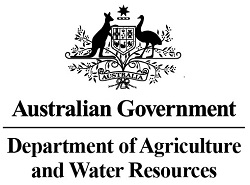Digital solutions for grape quality measurement and management
Project summary
Currently, subjective (visual) methods are used to quantify grape condition at the weighbridge. Defects may reduce the price paid to the grower or result in rejection of the fruit. This subjective assessment can cause mistrust for the grape supplier about the load assessment process. Conversely, if a defect such as bunch rot is present in the load but not observed, the resultant wine may have a lower value (50-70% of potential). The development of a process to objectively measure bunch rot and matter other than grapes (MOG) will provide greater transparency of the assessment process and help prevent the production of poor quality wine. This project will build on past work relating to objective measures of grape quality, in particular measurement of the degree of fungal rot infection through the use of spectral methods and chemometrics. Commercially available Visible-NIR hyperspectral imaging systems will be used at the weighbridge to provide objective data on the degree of infection by fungal rots and subsequent deterioration of fruit quality. Hyperspectral imaging is an emerging technique used in food manufacture but has mainly been used in the wine industry for assessing vineyard variability through aerial imaging. If hyperspectral imaging is unsuccessful, spectroradiometer probes will be used for the assessment of both fungal rot and MOG. The project will provide viticulturists and winemakers with tools to help optimise grape production towards desired quality targets, preferred wine styles and premium price points, as described in strategy 3 of the Wine Australia strategic plan.
Latest information
Laboratory-based hyperspectral imaging
Images were collected with a laboratory-based hyperspectral linescan camera (Specim FX10) that collected images with spectral information over the 400-1000 nm wavelength range embedded in each pixel. This spectral information was used to classify each pixel in terms of its material class, and this classification was applied as a false colour image over the spatial information. The image analysis software packages used were Scyven and ENVI.
Hyperspectral imaging could discriminate clean and infected red and white grapes, both laboratory infections and field samples. The calibrations were not dependent on growing region, grape variety or Botrytis strain. The technique could also discriminate Botrytis infection from sour rot (mixed fungal and bacterial infection of grapes). Washing sporulating berries with grape juice and smashing berries to simulate mechanical harvesting also did not prevent identification of Botrytis. Hyperspectral imaging could also identify sunburn in white grapes and shrivel in red and white grapes and could discriminate other grapevine components that often form MOG in mechanically harvested grape loads: canes, wood, petioles, leaves and insects.
Field-based multispectral imaging
Using information from the hyperspectral data, key wavelengths that discriminated different materials were used to select filters for a multispectral camera (Ocean Optics SpectroCam). This camera operates in snapshot mode like a conventional still camera, and does not require the sample to be moved under the camera, as with the FX10 linescan camera. Laboratory tests were performed to compare LED and halogen lighting. Images collected under LED lighting indicated insufficient output in NIR wavelengths (790, 860, 918, 972 nm) and only the first four filters (444, 531, 680, 717 nm) could be used for multispectral imaging. Halogen lighting was suitable over the whole wavelength range.
The multispectral camera was tested at a grape weighbridge testing station. Mechanically harvested grapes were imaged as a mass or spread out on a standard backing board. Most of the intake was at night and samples were imaged with either halogen or LED lighting, but other lighting conditions were also tested: full sunlight with halogen fill-in and the shaded testing tray area with halogen plus some ambient daylight. The most reliable identification of Botrytis-infected grapes and MOG occurred when samples were imaged on a standard background under halogen lighting.
The multispectral camera was also tested in the vineyard to image grapes directly on the vine. Multispectral imaging could discriminate infected grapes, clean grapes and grapevine tissue, but the system was not practical as the camera filter wheel stepper motor need a stable voltage to synchronise well, requiring use of a generator. Nevertheless, this work illustrated the potential of imaging Botrytis on the vine.
An important area of future work would be to create a robust imaging system where software controls the camera and seamlessly runs the image analysis in the background to report a result, with minimal user input. A vineyard imaging system requires development of portable devices with appropriate wavelength ranges and onboard image analysis capability. The ability to accurately monitor grape quality will be of economic importance to the wine industry and in the case of Botrytis infection will assist in setting suitable standards for infection level. A simple, robust system is required to encourage adoption.
Project Contact
Markus Herderich
This project is supported by Wine Australia, through funding from the Australian Government Department of Agriculture and Water Resources as part of its Rural R&D for Profit program and The Australian Wine Research Institute.


